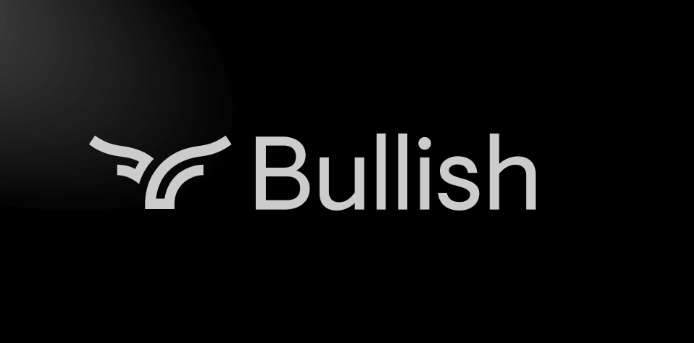Bullish Just Had A Strong Q2, But Numbers Are Not The Most Important Part
The cryptocurrency exchange Bullish, which recently listed on the New York Stock Exchange, reported a turnaround to profitability in its financial results while also securing a critical U.S. regulator

The cryptocurrency exchange Bullish, which recently listed on the New York Stock Exchange, reported a turnaround to profitability in its financial results while also securing a critical U.S. regulatory license, opening the door to the world's largest market. Its ambition to build an "MSCI for the cryptocurrency sector" has also come to light.
On September 17, Bullish, led by former NYSE President Tom Farley, delivered its first financial report as a public company. For the second quarter ended June 30, the company achieved a net profit of $108.3 million, a stark contrast to the net loss of $116.4 million in the same period last year. This marks a significant turning point for the company following its listing.
Despite the substantial reversal in net profit, details in the financial report reveal a more complex picture. Excluding one-time items, the company reported an adjusted loss of $6 million for the quarter, compared to an adjusted profit of $4.8 million in the prior-year period. Adjusted revenue declined to $57 million from $60.7 million year-on-year, which may raise concerns about the sustained growth capability of its core business.
Despite the pressure in adjusted figures, Bullish management remains optimistic about the future. CEO Tom Farley stated that the efforts in the second quarter are generating strong momentum for the current third quarter. Bullish expects adjusted earnings for the third quarter to be between $12 million and $17 million, with adjusted revenue projected between $69 million and $76 million, indicating a potential return to growth.
At the operational level, the company's trading activity continues to show robust growth. The financial report shows that total trading volume for the quarter increased to $179.6 billion, up from $133 billion in the same period last year.
Securing New York Business License, Opening the Door to the U.S. Market
During the earnings call, Bullish announced a milestone critical to its strategy: it has obtained the BitLicense virtual currency business license from the New York State Department of Financial Services (NYDFS), allowing it to provide spot trading and custody services to institutional clients and advanced traders in New York.
Farley described this as the "final key project" for launching the company's business in the United States. He referred to the New York BitLicense, along with the licenses the company already holds in the European Union, Hong Kong, and the UK, as the "quad factor"—the four most difficult top-tier digital asset regulatory approvals to obtain globally.
"We look forward to bringing our exchange and our leading liquidity to the United States imminently, and we believe this to be the largest geographic market by far," he said.
Despite gaining access to the U.S. market, Farley also cautiously managed expectations, noting that the company's target clients are institutional investors, and it will take time for these clients to fully integrate with the platform and begin trading at scale.
CoinDesk Index Aims to Be the "MSCI of the Crypto World"
Bullish's ambitions extend beyond its exchange business. In response to an analyst's question, Farley clarified the strategic positioning of its information services brand, CoinDesk, particularly its index business.
"What's going to enable us to be the MSCI of crypto, if you will?" Farley asked rhetorically during the call. He pointed out that as the market shifts from solely investing in Bitcoin and Ethereum to seeking broader asset portfolios, the demand for benchmarks like the S&P 500 or the MSCI Emerging Markets Index is growing. Bullish's CoinDesk 5 and CoinDesk 20 indices are designed for this purpose.
Bullish primarily serves institutional clients, offering spot and derivatives trading services for digital assets. The company acquired CoinDesk, a well-known media outlet in the crypto industry, in 2023. Its history traces back to Block. One, which once set a record for the largest initial coin offering (ICO) in history through the EOS project.
A major announcement came during the call. Farley excitedly revealed that a trust product developed in partnership with Grayscale, based on the CoinDesk 5 index, had just been approved by the U.S. Securities and Exchange Commission (SEC) to convert into an ETF. "This could become one of the world's largest multi-token ETFs," he said.
As of June 30, the assets under management (AUM) linked to CoinDesk indices had reached $41 billion.
Successful IPO Debut, Strong Institutional Interest
The attention on this financial report stems from Bullish's highly successful IPO in August this year. Led by former NYSE President Tom Farley and backed by tech billionaire Peter Thiel, the company listed on the NYSE on August 13 under the ticker symbol "BLSH."
Bullish's first-day performance was explosive, with the opening price surging 143% above the $37 offering price, and the stock closing nearly 84% higher, bringing its market capitalization close to $10 billion. The IPO not only raised $1.1 billion for the company but also highlighted strong institutional interest in the crypto industry, with pricing well above the guided range.
It was reported that prominent institutions such as BlackRock and Cathie Wood's ARK Invest expressed interest in subscribing.
However, Bullish's path to listing was not without challenges. This was the company's second attempt to go public in four years. It had planned to go public through a merger with a special purpose acquisition company (SPAC) during the 2021-2022 crypto bull market, but the deal fell through in late 2022 due to deteriorating market conditions. This time, the company successfully entered the capital markets through a traditional IPO.
Disclaimer: The views in this article are from the original Creator and do not represent the views or position of Hawk Insight. The content of the article is for reference, communication and learning only, and does not constitute investment advice. If it involves copyright issues, please contact us for deletion.